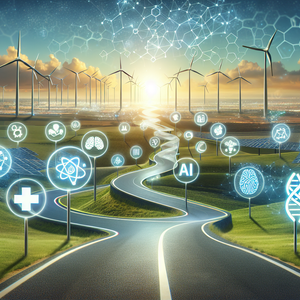The Future of Food Delivery: How Pay Models Are Evolving for Uber Eats Drivers

One of the most critical influences on Uber Eats drivers' pay models is the evolving regulatory environment surrounding gig economy jobs. Various regions, particularly in the United States, have begun to scrutinize the classification and compensation of gig workers. For instance, California's Assembly Bill 5 (AB5) sought to reclassify many gig workers from independent contractors to employees, which would ensure they receive benefits such as healthcare, paid sick leave, and a minimum wage. This legislation has significant implications for Uber Eats drivers. If drivers are classified as employees, their earnings could increase substantially, granting them more financial security and protections. However, the push for better pay and benefits has met resistance from companies like Uber, which argue that the flexibility of gig work is a fundamental draw for many drivers. The ongoing debate over fair compensation versus the need for flexibility in gig work remains contentious, and as more states and countries consider similar legislation, the future pay model for Uber Eats drivers may experience dramatic shifts.
Technological Advancements and Their Impact on Earnings
Technological innovations play a pivotal role in shaping the future of food delivery and driver earnings. The integration of artificial intelligence (AI) and machine learning into delivery platforms can optimize routes, reducing the time drivers spend on the road and increasing the number of deliveries they can complete in a single shift. For instance, AI algorithms can analyze traffic patterns and predict peak delivery times, allowing drivers to maximize their efficiency. Furthermore, data analytics can provide drivers with insights into demand fluctuations, enabling them to make informed decisions about when and where to work. For example, a driver who understands that certain neighborhoods experience surges in demand during weekend evenings can adjust their schedule to capitalize on those lucrative hours. As technology continues to evolve, it will provide drivers with new tools to enhance their earning potential, potentially leading to more competitive pay structures as companies strive to attract and retain a robust workforce.
Consumer Behavior and Its Influence on Pay Structures
Shifts in consumer behavior are another critical factor influencing the pay models of Uber Eats drivers. The COVID-19 pandemic significantly accelerated the demand for food delivery services, prompting an influx of new drivers into the market. This surge in supply has intensified competition, which can, in turn, drive down earnings per delivery. However, as consumers grow accustomed to food delivery services, many are willing to pay premium delivery fees or offer higher tips, particularly for exceptional service. This change in consumer expectations presents opportunities for drivers to increase their earnings through enhanced service and customer interaction. For instance, drivers who communicate effectively with customers about delivery times or provide a friendly experience are more likely to receive positive feedback and larger tips, ultimately boosting their overall income.
Case Studies and Earnings Comparisons
To further illustrate the evolving pay models for Uber Eats drivers, we can examine specific case studies from different cities. In urban environments like New York City, where demand for food delivery is high, drivers may experience higher earnings due to increased delivery volume and more substantial tips. Conversely, in suburban areas with lower demand, earnings can be less predictable, making drivers more reliant on base pay and surge pricing. Research indicates that drivers in cities with a higher cost of living tend to earn more; however, they also face increased competition. For example, a driver in San Francisco may earn more per delivery due to the higher cost of living but must compete with a larger pool of drivers. This dynamic creates a complex landscape where earnings vary significantly based on location, time of day, and individual driver strategies.
The future of food delivery, particularly for Uber Eats drivers, is on the brink of significant transformation. As regulations evolve, technology advances, and consumer behaviors shift, the pay structures that govern drivers' earnings will likely adapt to meet new challenges and opportunities. Understanding these trends is crucial for drivers who wish to navigate the gig economy effectively and maximize their earning potential. As we look ahead, it is evident that the food delivery landscape will continue to evolve, and drivers must remain informed and adaptable in this fast-paced environment. The interplay of regulatory changes, technological advancements, and consumer preferences will shape the future of food delivery, ultimately determining how drivers are compensated for their essential role in this burgeoning industry.
Delivery Operations Manager
Uber Eats, DoorDash, Grubhub, Postmates
Core Responsibilities
Oversee daily operations for food delivery logistics, ensuring timely and efficient order fulfillment.
Collaborate with marketing and customer service teams to enhance overall delivery experience and customer satisfaction.
Required Skills
Strong analytical skills for data-driven decision-making and process improvement.
Experience in logistics or supply chain management, preferably in the food service industry.
Data Analyst - Food Delivery Services
Uber Eats, DoorDash, Just Eat
Core Responsibilities
Analyze delivery patterns and consumer behavior to provide actionable insights for improving service efficiency.
Develop reports and dashboards to monitor key performance indicators (KPIs) related to delivery operations.
Required Skills
Proficiency in data analysis tools such as SQL, Python, or R, and visualization software like Tableau or Power BI.
Experience in the food service or logistics sectors is a plus, particularly in understanding delivery metrics.
Customer Experience Specialist
Uber Eats, Grubhub, Postmates
Core Responsibilities
Handle customer inquiries and complaints, providing solutions to enhance user satisfaction.
Collaborate with delivery personnel to ensure effective communication and service quality.
Required Skills
Excellent verbal and written communication skills, with a strong focus on customer service.
Experience in a customer-facing role, preferably within the tech or food service industries.
Logistics Coordinator
DoorDash, Uber Eats, Blue Apron
Core Responsibilities
Coordinate the transportation and delivery of food orders, optimizing routes and schedules for efficiency.
Monitor inventory levels and supply chain logistics to ensure availability and minimize delays.
Required Skills
Strong organizational skills and attention to detail in managing multiple deliveries and schedules.
Familiarity with logistics software and tools; experience in food delivery or retail logistics preferred.
Fleet Management Specialist
Uber Eats, FedEx, Amazon Logistics
Core Responsibilities
Oversee the maintenance and management of delivery vehicles to ensure safety and compliance.
Analyze fleet performance data to optimize operational costs and enhance delivery efficiency.
Required Skills
Knowledge of vehicle maintenance and fleet management software.
Experience in logistics, transportation, or supply chain management, with a focus on food delivery operations.


